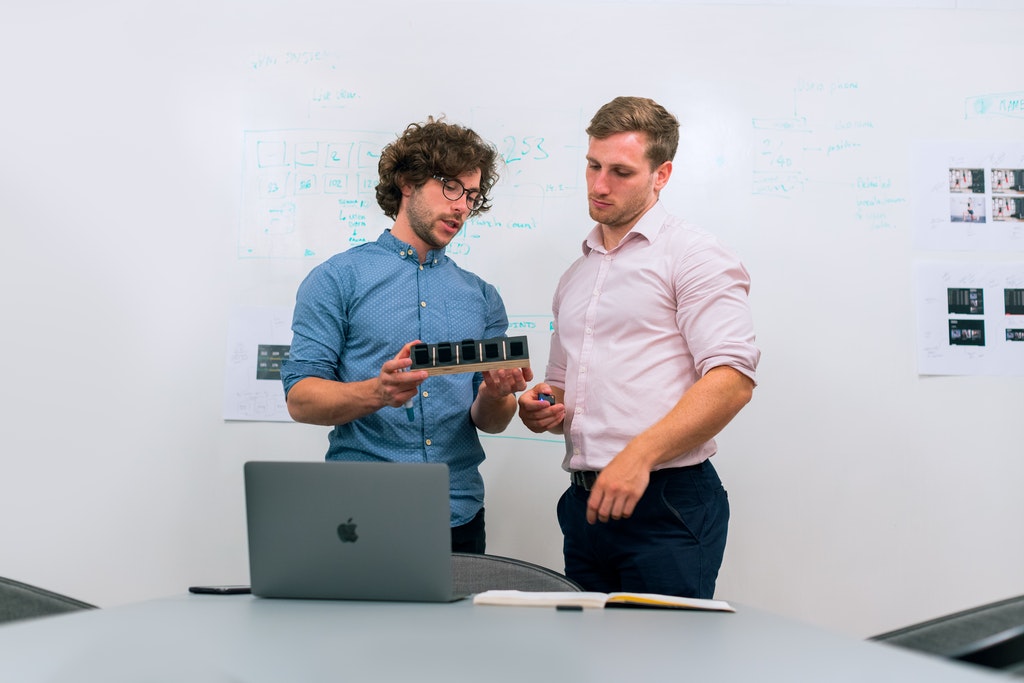
Failure is discovering how to make something great even more extraordinary. It is the driving force behind leaders reaching their highest potential. It helps to discover what aspects of your products make your customers happy.
Failure helps you create innovative products and procedures that make your customers’ lives easier. By failing, you can uncover the areas that need improvement in your product. If you fail fast, you can find these flaws right out of the gate. That way, you can decrease the number of times you need to iterate your design.
People who work for a company tend to focus on competition, making the most sales, and having the most high-paying customers in the business world. While all these things are essential, innovation is the most important thing to focus on. Innovation is enhancing your products and services to make them easily accessible, more user-friendly, and provide the most customer success. This ensures future success in the other areas.
The goal is to ensure that the product or service the customer receives is the best version of what you’re selling and what your brand stands for. There is no race to see who can fail the fastest. But the faster you fail, the quicker you can arrive at that ideal product state.
What Does It Mean to Fail Fast?
Failing fast is the process of experimenting to learn more about your product. As you learn more about the product, you can make changes along the way that will help you reach your desired goal.
The goal of failing fast is discovering little nuances during testing that will optimize solutions. The agile methodology of failing fast is about having a plan and process to obtain feedback immediately and determining how to utilize different approaches to make the product or service better for the customer.
Agile teams embrace failing fast because it increases the potential positive impact they have on their community. You can discover any pitfalls in your product well before launching and iron out any flaws. Furthermore, failing fast gives executives a better understanding of what their product can offer to customers.
It also gives teams a stronger foundation from which they can troubleshoot customer questions, concerns, and technical problems because they have already made the mistakes themselves. They know the potential downfalls and how to bounce back from them through trial and error during research and development.
How to Fail Fast
The more you test, the more you increase your chances of creating the best version of your product and service. The last thing you want to happen is that you produce thousands of your product, and it flops, or some unforeseen error prevents customers from properly accessing their purchase.
The most crucial aspect of failing fast is focusing on the product at hand. Prioritize fulfilling the customer needs and functional requirements of your design. Write down in clear terms the purpose of the product. Figure out what the end user wants and the best ways to deliver it.
For example, say you want to design a refrigerator door. The requirements of this product are to minimize the thermal energy lost from the refrigerator and to give access to what is stored inside. To fulfill these requirements, you will want a door with thermal insulation.
Use axiomatic design to determine what you want your customers to receive and how you’ll help them get it. Then, look at your design to see how you can test and modify it to achieve that state. Be prepared for some repetition and redundancy. The more you fail, the less likely the product will fail for the end user.
Create a Schedule for Testing
Being a business owner is a career that will keep you busy most of the time. There will always be things that need to be done. Create a schedule that regularly incorporates product testing. If you don’t have the time to do testing yourself, delegate it to someone who can. Testing (and therefore failing fast) can easily be left behind if you’re not careful.
Change Your Mindset About Failing
Understand that an act that ends in failure is not a waste of time.
It’s easy to think and feel like failing is a waste of time and money. You test products and throw away used materials. Then you spend hours using your technology to ensure that it is still performing effectively despite your failure.
But testing and failing are well worth the investment. While it is impossible to catch all errors and create innovation for every product and service, it is still essential to do your part to try.
Many ideas to innovate your products and services will come from the consumer. However, the primary goal is to create a product and service that the consumer loves enough to consider how it can improve their lives.
If the customer feels like their purchase was a waste of money and time, they will write a bad review and maybe tell everyone in their circle not to waste their time purchasing the product.
They may even ask for a full refund of their purchase price. This is a backward failure – and much worse than wasting a little time and materials.
Fail Forward Instead
Failing forward is anticipating opportunities to serve your customer community better. This is the opposite of waiting for something terrible to happen and then reacting. Failure cannot be avoided, which is why it should be embraced.
The goal of failing forward is to minimize future failures that can significantly impact your bottom line, which is an overall positive outcome and impact. Let’s look at some ways to fail forward.
Avoid Irrelevancy
Each day, innovations are being created to serve customers of older services and products. For example, one no longer has to call a company to place an order for a book and wait for it to arrive at their house a week later. Thanks to technology, ordering a book is just a click away.
Changes just like this are happening in every industry. It is vital to always look for ways to take the guesswork out of accessibility and user ability. Even if you’re not always inventing something new, you are still innovating and serving your customers.
Become an Agile Leader
An agile leader creates a culture where testing and learning are at the forefront of evolution and innovation.
Leaders like this don’t trust only their ideas. Instead, they depend on a combination of opinions and expertise from their team no matter what level of the organization the team member is a part of. Agile leaders thrive off of collaboration. They create a strategy and organizational structure that executes and enforces these things.
In other words, an agile leader is one who listens to others for the betterment of their products and services.
Adaptability
The biggest problem with adaptability for business owners is an unwillingness to adapt to changes in their business environment. In many cases, they are unwilling to let go of what they want and what they feel their business should look like.
Adaptability is a flexible concept in which you don’t lose the impact you want to make on your community, but you’re willing to let the company’s culture evolve into something greater.
Let’s face it: There’s no way that the Apple iPhone 4 would compete technologically with today’s Google Pixel and Samsung Galaxy smartphones. But Apple was able to adapt to its environment without compromising what it wanted to offer its customers.
For example, enhancing camera functionality and creating a smaller iPhone option (SE) positively impacted the Apple community and served their needs in spite of technological inferiority. This attitude partly explains Apple’s loyal fanbase.
Strategize Failing Fast
Having a strategy in place is very important to accomplishing a goal, no matter the business or the industry. It follows that it’s imperative to create a system for failing fast.
One way to do that is to create a consistent testing schedule and know what you’re testing for. Having a checklist that documents all aspects of each test to determine what could be improved is one great strategy for failing fast.
Information technology tools need to serve their intended purpose and incorporate new programming, software, products, and services that further stimulate new opportunities for innovation. The strategic goal is always to work towards something bigger, better, and greater.
Positive Feedback Loop
A positive feedback loop is mandatory from both the business team conducting testing and customers. A product that serves the customers’ pain points without inconveniencing them and good customer service will motivate the customer to provide feedback that will create more ideas for innovation.
When conducting tests, look at what’s working and what could create a more positive feedback loop. The goal is to look at failure as an opportunity, not a problem. Feedback is the foundation for positive change.
Think Outside of the Box
Failing fast is not your only option for creating the best version of your product and service. Your company’s success depends on understanding the needs of your customer community, relationship building, customer feedback, and services that address the pain points of your customers, consistency, and customer service.
By thinking outside of the box, you can discover innovative ways to resolve your design problem. You can find inventive product tests and solutions to create a brand new product that fulfills the customer’s needs.
Wrapping Up
Failing fast is one of the best strategies for creating positive customer outcomes in the long run. Start by discovering what the customer wants and different ways you can achieve it. Then, work through many tests and iterations to determine which design solution works best.
Stay open-minded about failing. It is a learning opportunity to improve your product and keep your organization relevant. Remain agile, adaptable, and positive to help your team fail fast and bounce back even faster.
No matter what your role is in your company’s team, you can apply the practice of failing fast into your work in a positive and productive way that benefits everyone. Especially your customers.
Featured photo by ThisIsEngineering from Pexels.

Author Bio:
Daniel Jackson is a community manager for NI (formerly National Instruments), where they create the tools needed for companies to Engineer Ambitiously™. His current interests are at the intersection of software engineering and DevOps. Outside of work, he is a marathon runner and is working on his first novel.
Failing fast, celebrating failure and learning from it help build an innovative company.